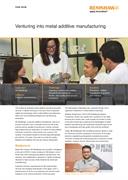Venturing into metal additive manufacturing
The market for specialist metal additive manufacturing (AM) services is rapidly evolving as more and more companies realise the advantages which metal additive manufacturing offers over more traditional design and manufacturing techniques.
3D Metalforge, a nascent additive manufacturer, set-out to provide customers with a complete end-to-end 3D metal printing service capable of producing in volume, intricate, high-quality end-use metal parts. Its choice of metal additive machinery would be a critical factor to its success. The systems it purchased needed to be well-supported globally and Industry 4.0-ready. They had to provide the quality, flexibility and reliability that the new venture demanded.
Background
Metal AM company 3D Metalforge was founded in Singapore at the end of 2016. A sister company of 3D Matters, one of South East Asia's fast-growing additive manufacturers, the company was established in response to rapidly increasing demand for high accuracy three-dimensional metal part manufacturing.
Industrial customer requirements for 3D metal printing services are changing dramatically in the region, from a predominance of short-run prototyping and one-off model making to more volume production of end-use parts.
This demanded a dedicated new production facility with a significant investment in metal additive machinery.
Matthew Waterhouse, CEO of 3D Metalforge explains, “Customers moved very quickly from a position of not really knowing that certain parts could actually be printed in metal, to the point where they understood the advantages of metal additive manufacturing over traditional manufacturing and the part complexities and high quality that could be achieved.”
Today, 3D Metalforge's ISO-certified production facility is used by industrial customers operating in the marine, oil and gas, precision engineering and general manufacturing sectors. The kinds of advanced metal printed parts it produces include impellers, antenna mounts, lifting hooks and swivel joints.
A highly specialised company, 3D Metalforge provides its customers with a complete end-to-end metal AM service, comprising consulting and diagnostics, part design or re-design, high-quality part printing and post-production (heat treatment, sawing, bead blasting, polishing and finishing).
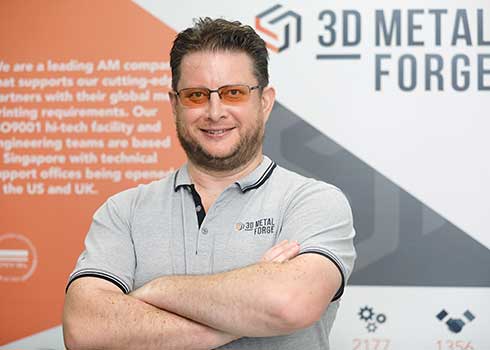
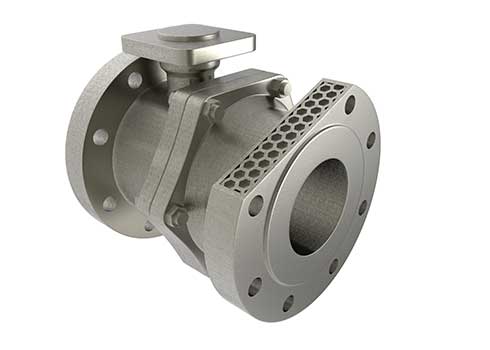
Challenge
As an all-new venture in a rapidly evolving manufacturing sector, 3D Metalforge sets stringent selection criteria for its metal additive system purchases. Faced with a wide range of alternatives, the company needed to be certain that the capital investments it made would provide its customers with the service they needed today and well into the future. Criteria included:
- Additive production samples needed to demonstrate high-quality and the ability to produce a wide range of fine line, high complexity parts.
- Technical support from the manufacturer needed to be locally-based, for both pre- and post-sale phases.
- System reliability is paramount for end-use part production. It needed to be proven.
- The system needed to be easy to use, with a minimal learning curve.
The system manufacturer will also need to show clear knowledge and understanding of manufacturing and typical 3D Metalforge operations.
3D Metalforge is also very mindful of emerging Industry 4.0 trends. The metal additive systems they purchased would also need to be capable of supporting the key principles of the ‘fourth industrial revolution', including data transparency, connectivity and human-machine interface.
Waterhouse explains, “We see metal additive manufacturing as an integral part of Industry 4.0, something that's at the forefront of future manufacturing change. Forward-thinking companies in Singapore and the rest of Asia are fully embracing the Industry 4.0 concept and we needed to reflect that in our decision-making.”
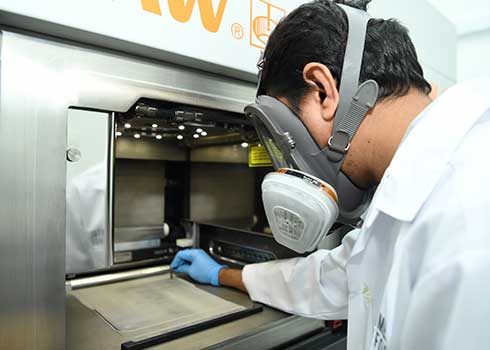
Solution
Hardware and support
One of the first systems to meet 3D Metalforge's selection criteria was Renishaw's small footprint AM 400 additive manufacturing system. With a 250 mm x 250 mm x 300 mm build volume, the system is equipped with a 400W laser system with a beam diameter of just 70 μm. Its human-machine interface is highly graphical and intuitive in nature.
Following an ‘open parameter' ethos, the AM 400 provides 3D Metalforge with the freedom to optimise machine data settings to suit the metal powder being processed and specific target geometry. The system's inert gas atmosphere is class-leading and its SafeChange™ filter handling system minimises contact with powders and process emissions.
Mr. Waterhouse said, “Renishaw was already well known to us through its precision measurement technologies. Importantly, Renishaw clearly understood manufacturing, it knew about material setup, calibration and how we wanted our new facility to operate.”
“From the outset, we were immediately impressed by the very high quality of the production samples presented. Our belief is that metal 3D printing and traditional machining processes should complement one another, and we could see how the AM 400 could help make post-production processing easier.”
Renishaw was already well known to us through its precision measurement technologies. Importantly, Renishaw clearly understood manufacturing, it knew about material setup, calibration and how we wanted our new facility to operate.
3D Metalforge (Singapore)
Software
For the vast majority of the work undertaken with the Renishaw AM 400 additive manufacturing system, 3D Metalforge uses Solid Works software for initial 3D CAD design, along with Autodesk to work on part printability when required.
Renishaw's QuantAM build preparation software is then used to optimise support structures for aligning the part within the build volume and setting up the final print file.
3D Metalforge also uses Renishaw's InfiniAM Central, software specifically designed for remote process monitoring of additive manufacturing systems. Providing near real-time insight into live additive manufacturing builds and access to historic build data, it displays system information in a highly graphical form enabling intuitive in-depth analysis.
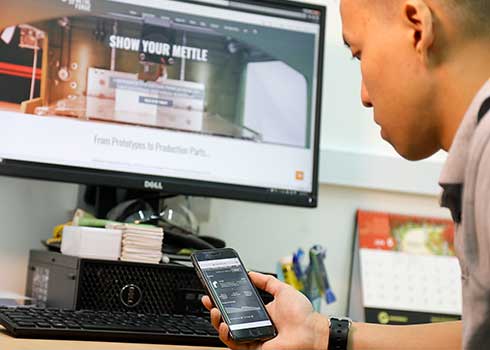
Results
During the 18 months since commissioning, the AM 400 additive manufacturing system has become 3D Metalforge's busiest and most utilised metal 3D printer, with machine up-time, accuracy and reliability cited as extremely good by Waterhouse.
He shares an example on how 3D Metalforge provided a complete end-to-end metal 3D printing service to a technology equipment company: "The equipment company looked for a way to optimise its part, a metal tray, and improved its in-product performance. Unable to achieve desired design goals using traditional manufacturing techniques, the company approached 3D Metalforge for an alternative metal printed solution."
Since the original part design wasn't optimised for AM, it was first re-designed. 3D Metalforge introduced lattice structures to reduce weight and new shaping to enhance part alignment. A few prototypes were produced and tested within the end-product assembly before finalising the part design.
A few hundred of these intricate metal parts have so far been produced using the AM 400 system for a quality control pass rate of 100%. The AM design has reduced the weight whilst enhancing its performance.
For the future, 3D Metalforge foresees a lot more work taking place in the realm of standards and certification for additive manufacturing, and the production of even more advanced industry specific parts as a result. As more and more sectors embrace AM it also expects to see the range of specialised metal powders increasing.
3D Metalforge expects to continue to expand the range of systems it operates, to support a wider mix of part sizes and a wider range of metal powders. The company is planning to open further factories in high growth Asian markets and is currently expanding its presence and solution offerings in the USA, which it identifies as one of the largest markets for its unique brand of metal AM services.
For us it was very important that we worked with an engineering company that understood manufacturing, rather than a 3D printing company that produce printers, and the difference tells in how the printers perform for us.
3D Metalforge (Singapore)
